In 2006, I did a drive-by recon of Passage Creek with my son. As we drove past turnout after turnout packed with cars, we concluded that the pressure on Passage was close to intolerable. While that has not changed, I actually fished it in late March 2008 to get a sense of the stream and its potential—if you can get in there before it is cleaned out.
Knowing that the fishing Passage would probably not be productive, I checked some of the other water in the area before finding an open hole in a turnout. So, my first stop of the day was at Peters Mill Creek. As documented in that trip report, it was a waste of time. Off to a good start for this trip!
I tried to get up to Little Passage Creek since the VDGIF site indicates that it is also stocked trout water, but the gate was not open to allow access on the road that runs along the top of the ridge. With two failures behind me on a single day, I pointed the truck at Passage and started to look around. I was there on a Friday, so the crowd was not as thick as it gets on a Saturday. Following the advice in the Flyfisher’s Guide to Virginia, I drove down to the Hatchery with the intent of working downstream in the delayed harvest area. Ouch. Even on a Friday, there were nine other trucks crammed into the small turnouts on either side of the bridge leading to the Front Royal Fish Cultural Station. Forget that option.
After making a U-turn, I returned to the main drag and drove south, looking for a likely turnout. There are plenty of parking options on the road. For the 1/2 mile or so after you pass the hatchery, you cannot see the creek. If you park there, you will need to bushwhack to the water. There were enough trucks distributed across these spots that I assumed was a good stretch and was not a good place for me to try and horn in.
Continuing upstream, the creek pops into view, and you begin to get a sense of the scenic nature of the water here. The creek charges through the gorge, crashing over rocks and creating nice pools. Of course, every visible pool on the road has a turnout and a beaten path leading to it. However, the good news is that the water is close enough to the road that the stock truck should be able to do a good job of distributing fish here. Since this is Category A water, it gets 5 stockings a season.
I passed those spots by and, after a map recon, decided to park at the turnout at the entrance to the gorge. At this location, the creek veers away from the road, forcing the fisherman to walk. That could be just enough of a barrier to relieve some of the pressure. The flip side of that is that the stock truck will not penetrate, and I would have to rely on any washdowns or swimups.
The path to the creek was beaten down, well-marked, and led directly to a pristine-looking spot. For all the pressure this creek gets, I was pleasantly surprised that there were not thousands of cans, bottles and bait containers decorating the scene. In fact, it was pretty clean.
The creek runs deep and fast here. It was about 20 feet wide, and I definitely needed the chest waders I pulled on (mostly for warmth). You could see through the greenish/brown tinged water and observe plenty of rocks and boulders littering the creek bed. The seams were well defined and there was not a lot of overhanging vegetation to get in the way of casting. Sweet!
I loaded up with a dry fly – a generic attractor pattern – with a zebra midge dropper and started to work my way up the creek. The 44 degree water must have depressed the activity (or I was not getting the midge deep enough) and I did not have any luck. Popping out to the bank to move farther upstream, I dodged through some thick pricker bushes. Thick enough that I needed to pull out my shears to snip my way through.
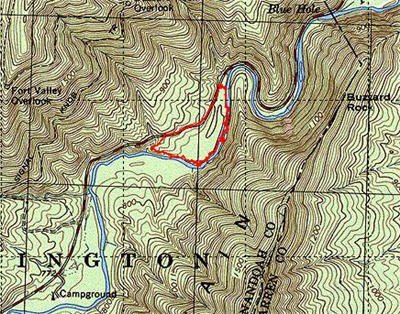
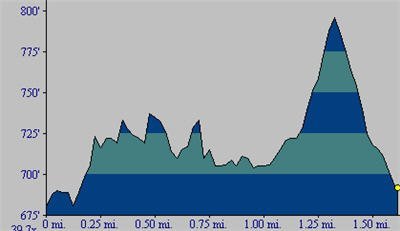
I slid back into the water immediately downstream from the junction of two branches of the Passage. Switching to a larger more generic prince nymph, I continued to flip my way around the water. Strikes! The larger nymph was the ticket. I started to pick up strikes in the deeper pockets. However, this early in the season, my reflexes were off and I was unable to hook anything. Since the hits did not occur in the same place, I am fairly confident I was not snagging rocks.
The farther upstream I went the nicer the scenery became. There is a steep forest wall to the left as you move upstream that provides the perfect punctuation and gives the stream a western feel. The final stretch I fished opened up and provided me a view of the forest leading to the top of the Blue Ridge. I plopped down to suck some coffee out of my thermos and was perfectly content. Nothing better than being on the water on a day off with the sun in your face. Well…. catching a fish would have actually made the day better, but for those like me who rely more on luck as we build our skill, catching a few rays was about it. I’ll take that over work any day.
The walk out of the gorge in this area does involve a moderate uphill walk (see the elevation map above) that puts you on a large parking lot to the east of the road. Clearly, this is a hot spot as the turnout I landed in down below was also very large. However, I did not run into anyone else in this section while I was fishing, but two trucks rolled into the parking lot as I was about to leave.
Passage Creek Trout Fishing Bottom Line: If you have someplace you can go, go there. The pressure is intense here. If you come, come immediately after stocking as most of the stream is Put and Take which must get cleaned out pretty quickly.
Getting There: Mapquest yourself to Front Royal, VA. Turn west on 55. Follow it to Fort Valley Road and turn left (south) to drive by Passage Creek. You will see the sign for the hatchery on your left. Keep going and the creek will pop into view
Secrets Revealed? No. This is a very public location that is documented in the following places:
Virginia VDGIF
Flyfisher’s Guide to Virginia
Virginia Blue-Ribbon Streams
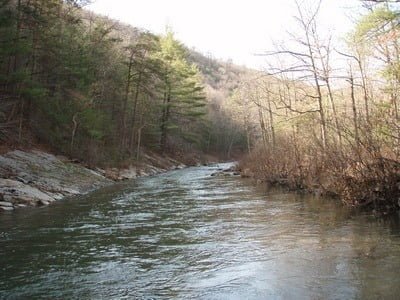
Upstream from the start point
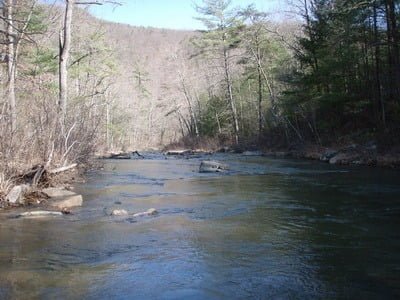
Downstream from the start
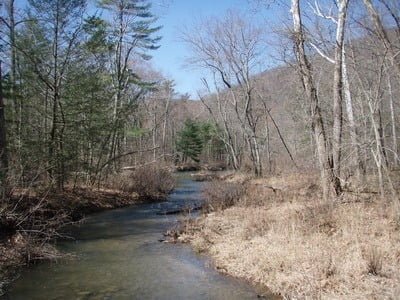
Passage splits and forms this run
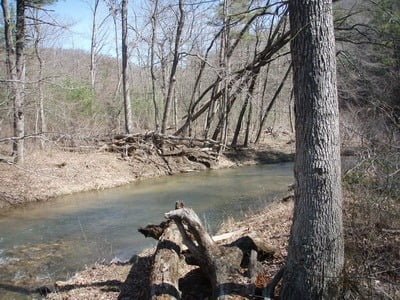
and this one
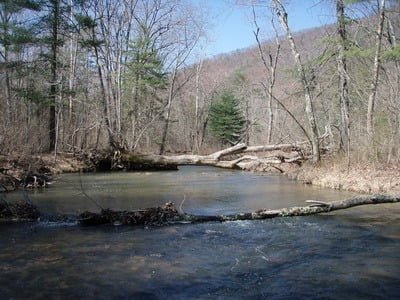
joining again at the top right here.
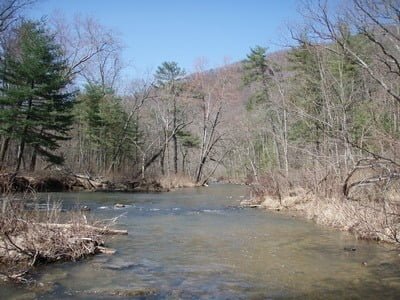
Looking upstream from where I left the water
Unless stated otherwise, this article was authored by Steve Moore


